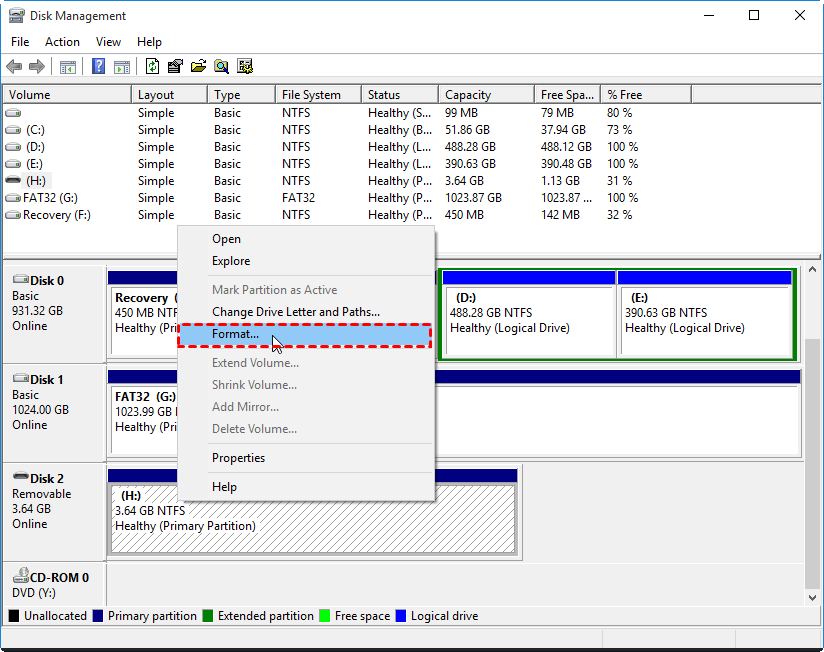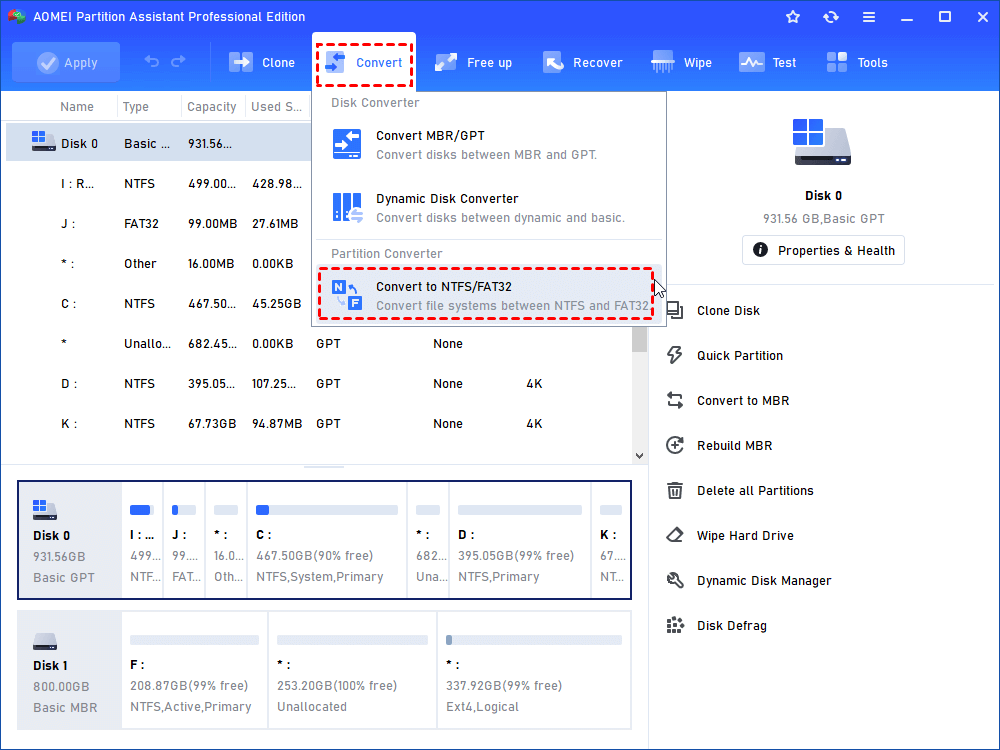Table of Contents
Here are some simple steps that can help you fix NTFS or FAT32 hard drive problem.
PC running slow?
If you only need a disk in a Windows environment, NTFS is the best choice. If you need to share files (even occasionally) with a non-Windows system such as a Mac or Linux computer, FAT32 will be less difficult since your files are less than 4GB in size.

Whether you are formatting an internal drive, external controller, USB stick or SD card,Windows allows you to choose between different file systems: NTFS, FAT32 and, in addition, exFAT. Explain that the Windows formatting dialog is irrelevant, then we’ll do it.
The file system is used to organize the disks. It defines how data is stored on disk and what types of documents can be attached to files – file names, permissions, and secondary attributes. Windows supports three different file tools. NTFS is the most advanced file machine. Windows uses NTFS for drives and is the default for most non-removable drives.
FAT32 is often an older file system that is not as efficient as NTFS and is not advertised as a large feature set, but provides more compatibility with other systems that use it. ExFAT is the modern replacement for FAT32 and supports more devices and operating systems such as NTFS, but it is not quite as normal as FAT32.
NT System (NTFS)
NTFS is a popular file system that Windows likes to use with the. When you install Windows, it formats your NTFS file system present on the disk. NTFS has file and partition size limits that are theoretically so large that you can’t handle them. NTFS first appeared in commercial versions of Windows with Windows XP, although one of them originally debuted with Windows NT.
NTFS contains modern features not available for FAT32 and exFAT. NTFS supports file permissions in the name of security, a change log that can be used to quickly fix errors in the event of a computer failure, shadow copies for backups, encryption, disk limits, physical links, and various other benefits. Many of these are required for the operating system disk, especially the authorization file.
PC running slow?
ASR Pro is the ultimate solution for your PC repair needs! Not only does it swiftly and safely diagnose and repair various Windows issues, but it also increases system performance, optimizes memory, improves security and fine tunes your PC for maximum reliability. So why wait? Get started today!

Your computer with a Windows partition must be NTFS. If you practically have an additional disk in addition to Windows, and you install programs on it, you probablyhowever, you will need to do this in NTFS as well. And if you have drives whose compatibility isn’t a big deal – because then you know you’ll only use them on Windows systems – go for NTFS.

Despite these advantages, ntfs is incompatible. It works with all newer versions of Windows – up to XP – but Windows has limited compatibility with other operating systems. By default, Mac computers can only read NTFS drives, but not write to them. Some Linux distributions may include NTFS write support, but many are read-only. None of the Sony PlayStation consoles support NTFS. Even Microsoft’s Xbox 360 cannot read NTFS drives, although the various Xbox Series S, X, and One can. Other devices offer even less NTFS.
Compatibility: Works with all versions of Windows, but is read-only by default for Mac and may be read-only by default on some Linux distributions. Other devices, with the exception of Microsoft’s Xbox One, are unlikely to support NTFS.
Ideal for use: use it for Windows system drive, so othersinternal drives are usually only used with Windows.
File Allocation Table 32 (FAT32)

FAT32 is the oldest of our file systems available for Windows. It was introduced long ago in Windows 95 to replace the old FAT16 file system used in MS-DOS and many other Windows.
The age of the FAT32 file system has its advantages and disadvantages. The big advantage is that FAT32 is the de facto standard, especially because it is very old. The USB drives you buy are often formatted to FAT32 to ensure the best fit not only on modern computers, but on many other devices such as game consoles and a USB port.
Limitations arise with age, but usually they do not. The size of individual files on a FAT32 device should not exceed 4 GB – this is optimal. The Fat32 section is also It should be slightly less than 8TB, which is admittedly less, including the limitation, unless you are using very large drives.
While Fat32 is great for USB drives and other external media along with it, especially if you know you’ll be using it on non-Windows computers, you don’t want to use FAT32 for a good new internal drive. It lacks the read and write functionality built into the best modern NTFS file system. In addition, modern Windows models can no longer be stored on a FAT32 formatted drive; They must be installed on NTFS formatted drives.
Compatibility: Works with all versions on Windows, Mac, Linux, game consoles and almost anything with a USB port.
Ideal Use: Use this concept on removable drives where you need perfect compatibility with a wide range of receivers if you don’t have files of 4 GB or more.
Advanced file placement (exFAT)
The exFAT file for the system was introduced in 2006 or was added to older versions of Windows to upgrade Windows XP in addition to Windows Vista. exFAT is optimized for flash drives – it is designed to be a lightweight file system like FAT32, but without the added features and costs of NTFS without the limitations associated with FAT32.
Like NTFS, exFAT has very large partition and file size limits. This allows you to back up files that are much larger than the 4GB allowed by FAT32.
Although exFAT is not FAT32 compliant, it is much more widely used than NTFS. While macOS combines read-only NTFS support, Mac offers full read-write support for exFAT. ExFAT drives can be accessed through Linux by installing the appropriate software. Devices can be part of a mixed package. PlayStation 5 and PlayStation 4 support exFAT; PlayStation all three or not. Xbox Series X, S and One support it, but Xbox 360 does not.

Compatibleawn: works with all adaptations of Windows and modern versions for macOS, but requires additional software for Linux. More devices support exFAT than NTFS, but some, especially older ones, only support FAT32.
Ideal Use: Use when you need a larger instruction size and partition limit than FAT32 and when you need more compatibility with the NTFS offerings. Assuming each device requires you to support an Arch drive that supports exFAT, you need to format the device to contain exFAT instead of FAT32.
NTFS is for suitable internal drives, while exFAT is for ideal flash drives. However, in many cases, you may need to format your external drive to FAT32 if exFAT is not supported on the specific device you need to use this tool with.

Improve the speed of your computer today by downloading this software - it will fix your PC problems.
Does Windows 10 need FAT32 or NTFS?
Use the NTFS file system because Windows 10 NTFS is set by default to the file system used by Windows operating systems. For removable flash drives and second forms of USB-based storage, we start with FAT32. But for removable storage over 32GB, we use NTFS, you can also use exFAT as you like.
Should I format my SSD to NTFS or FAT32?
An NTFS socket is likely to beIt cannot be used on your Windows system drive and other internal drives. If you want better compatibility and want to use more gadgets seamlessly, you should upgrade to exFAT instead of FAT32. From a quick comparison that combines NTFS and exFAT, there is no simple answer as to which format is best for an SSD.
Oplossing Om De Harde Schijf Echt NTFS Of FAT32 Te Formatteren
Lösung Zum Formatieren Von Festem NTFS Oder FAT32
Soluzione Per Formattare L’unità Rigida NTFS O FAT32
하드 여행 NTFS 또는 FAT32를 포맷하는 솔루션
Solução Para Formatar O Disco Rígido NTFS Ou FAT32
Solution Pour Formater La Pompe Dure NTFS Ou FAT32
Lösning Till Hårddiskformat NTFS Eller FAT32
Решение для форматирования жесткого диска в NTFS или FAT32
Rozwiązanie Formatowania Dysku Twardego NTFS Lub FAT32
Solución Para Formatear La Unidad De Disco Duro NTFS O FAT32